Abstract
Experiment I examined the role of a reduced rate of responding in the occurrence of behavioral contrast. Four rats and a pigeon were exposed to a two-component multiple schedule in which one component was always a variable-interval schedule. The second component was, at different times, either a variable-time schedule in which food was delivered independently of responding, or extinction. Both extinction and the variable-time schedule reduced the rate of responding in the second component. Behavioral contrast was observed, however, only when extinction was scheduled in the second component. Experiment II examined preference, as measured by time allocation in concurrent schedules for a variable-interval schedule relative to a variable-time schedule. Two rats displayed a lack of preference between the two schedules. The results of these experiments support a preference interpretation of behavioral contrast, which holds that behavioral contrast is the result of the introduction of a less-preferred condition in one component of a multiple schedule.
Full text
PDF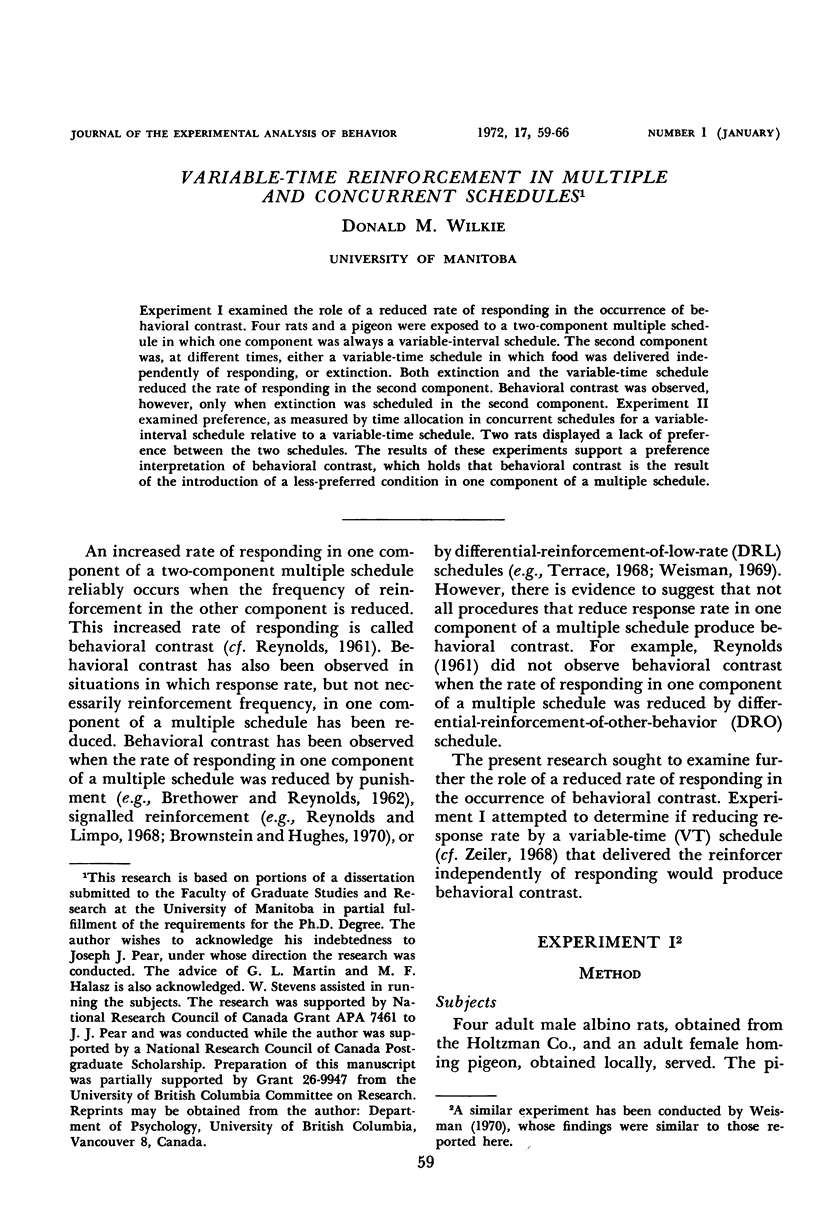
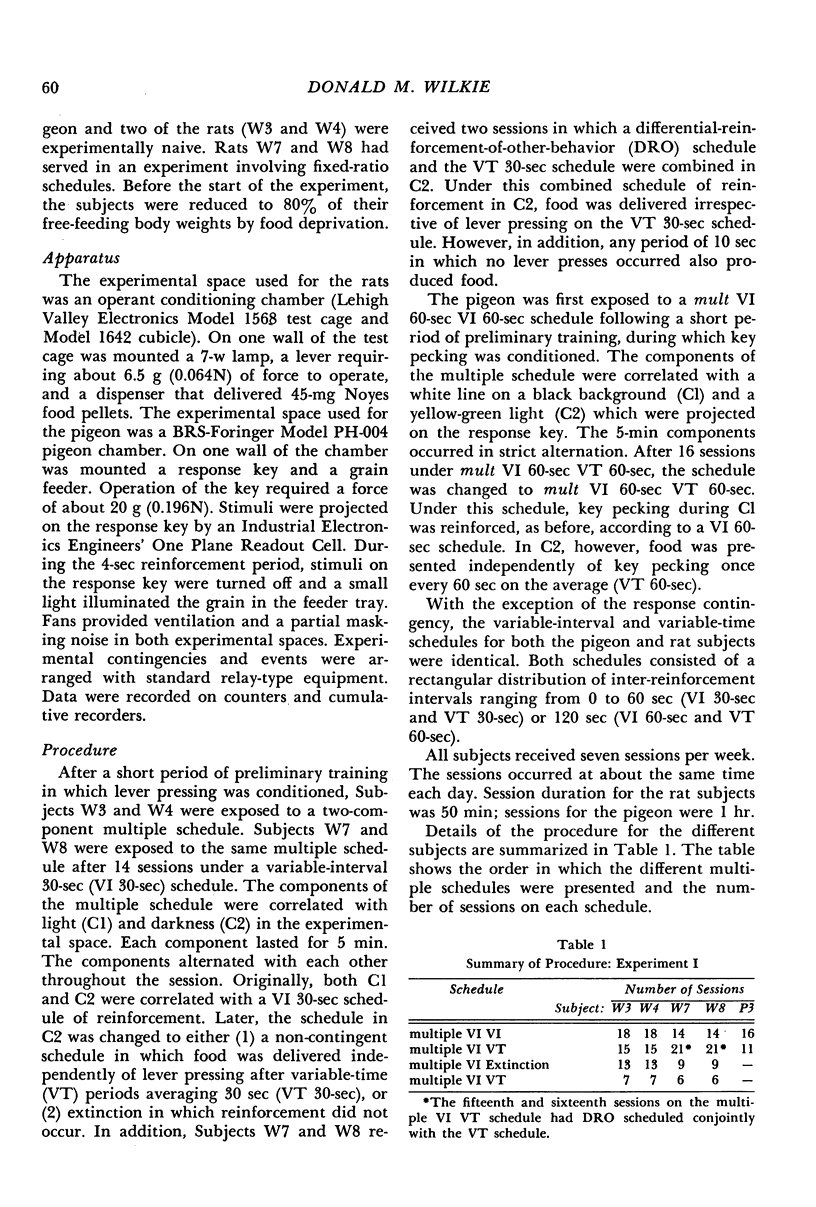
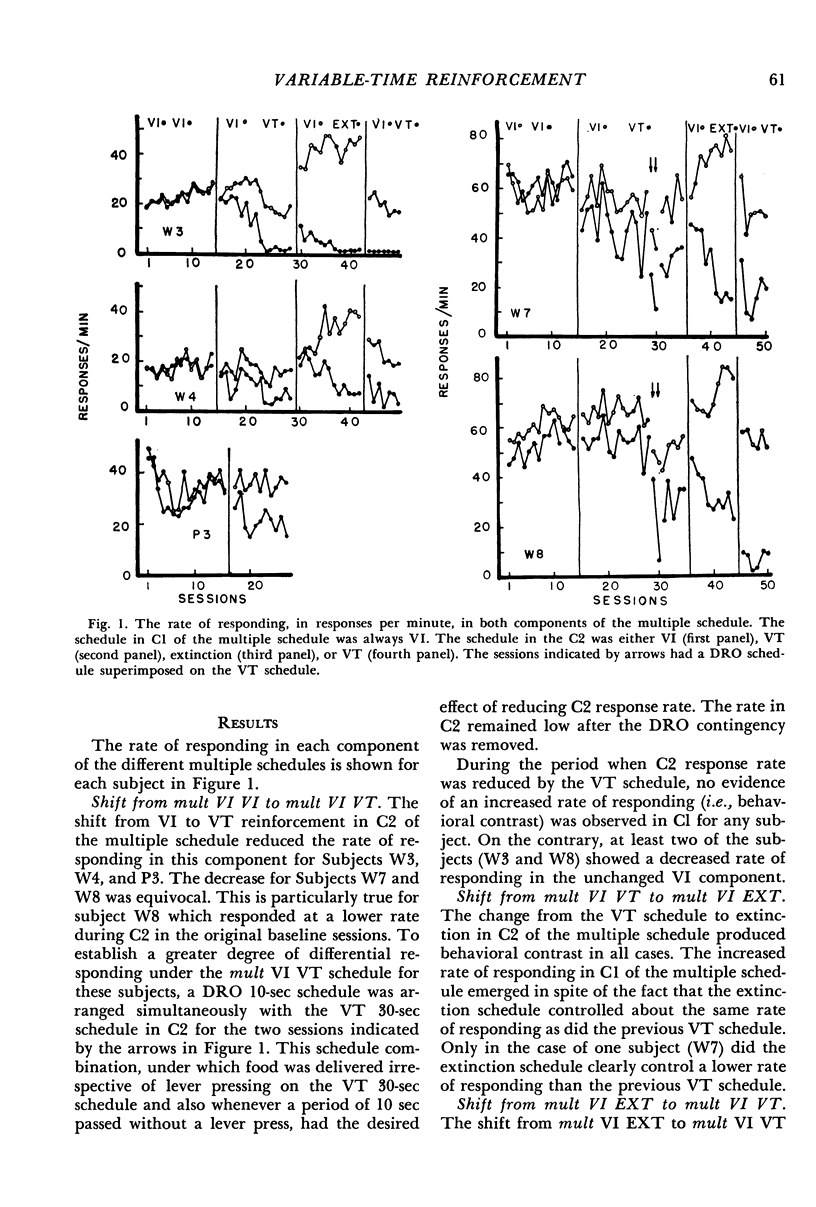
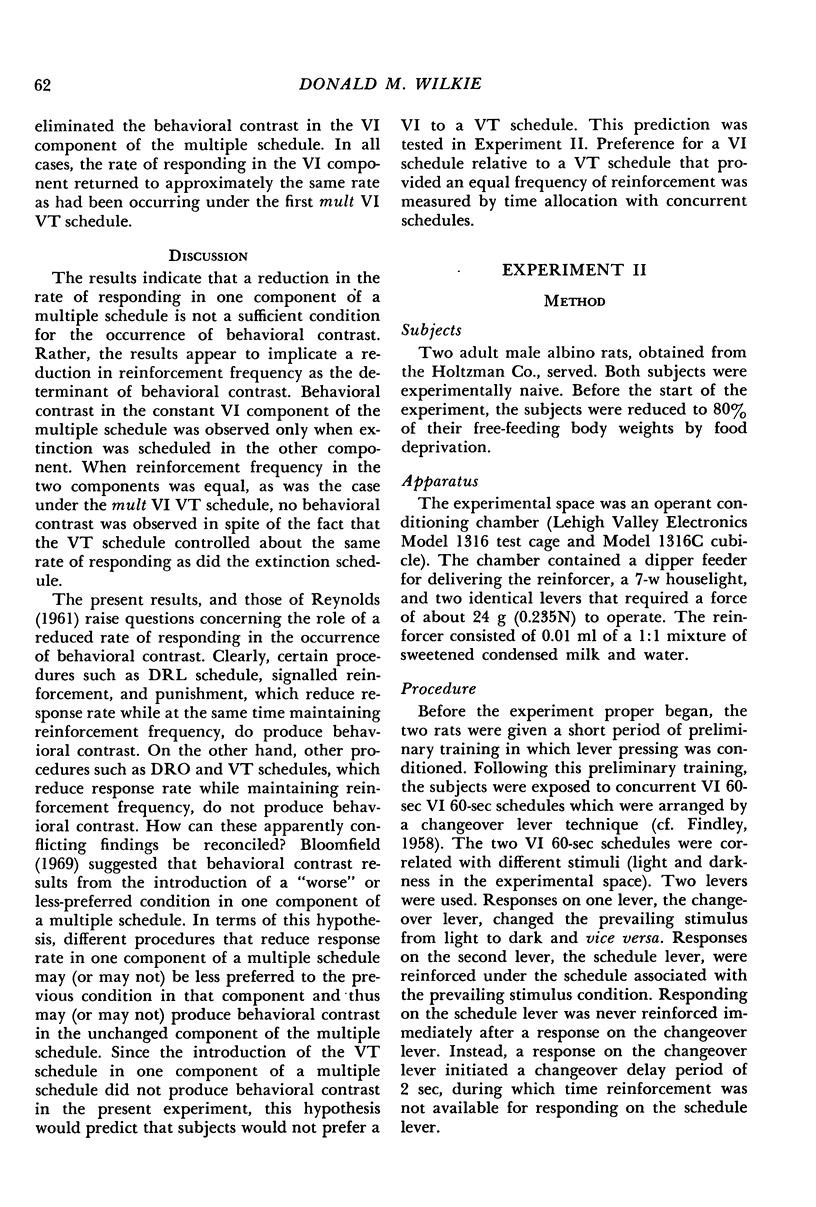
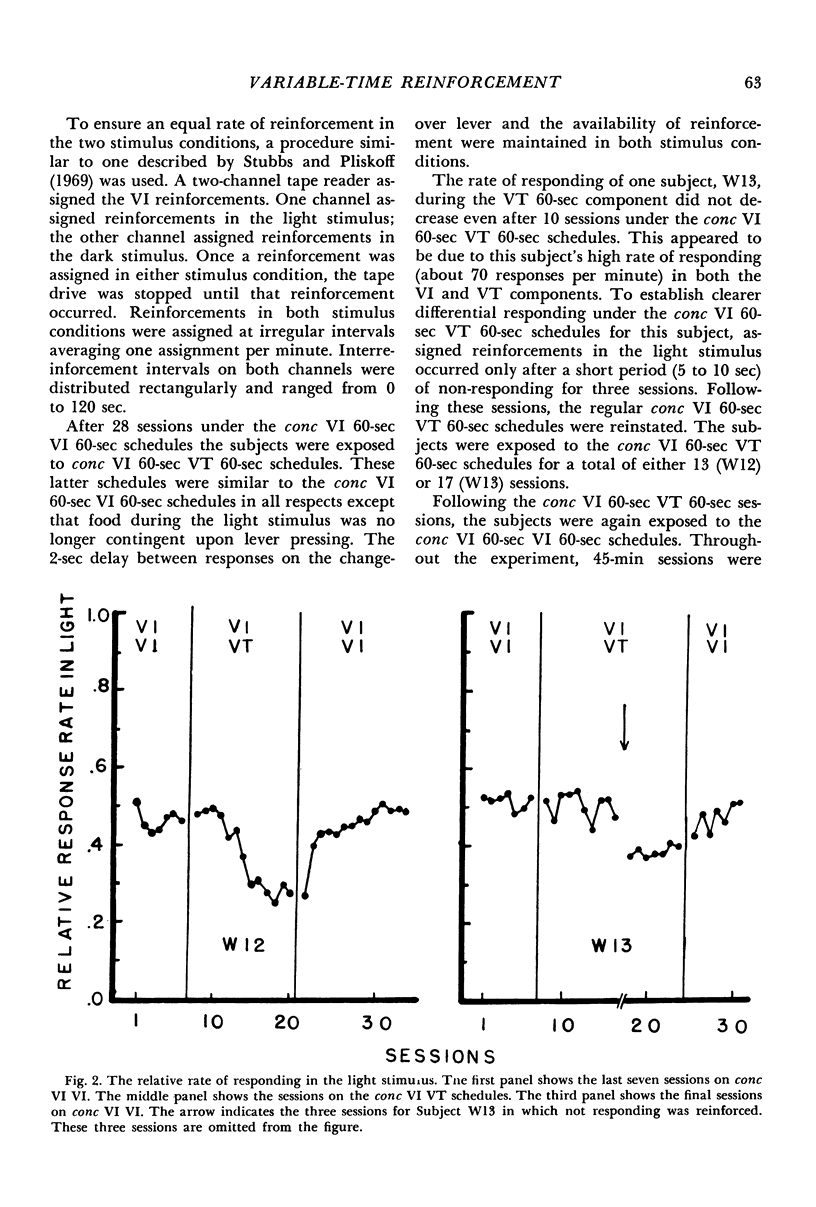
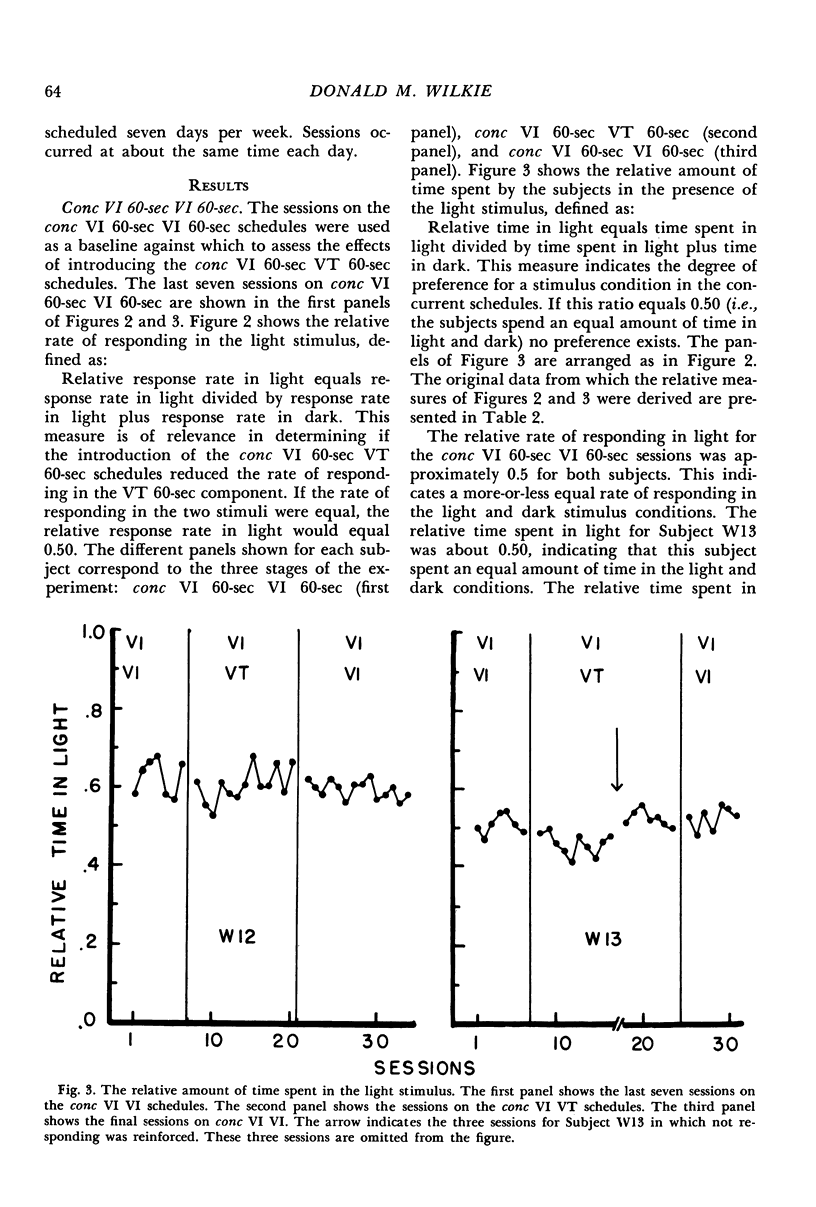
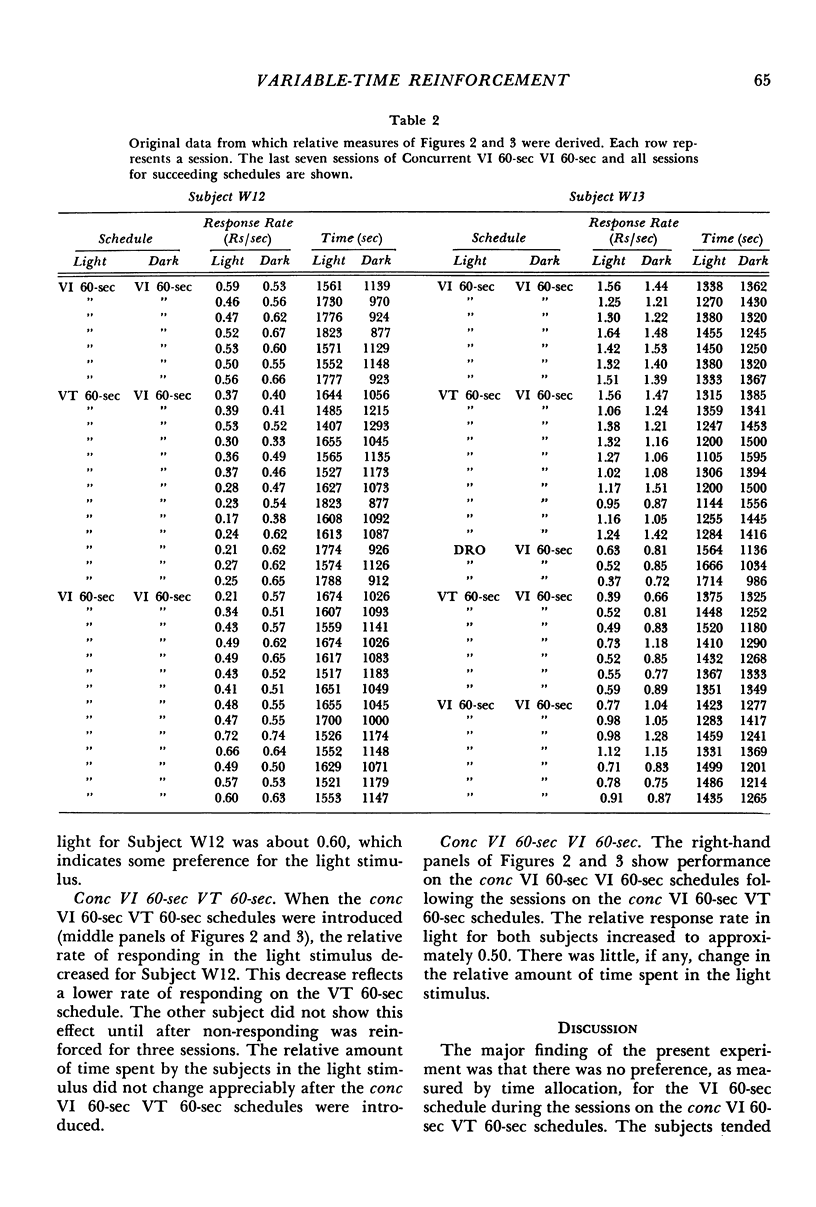
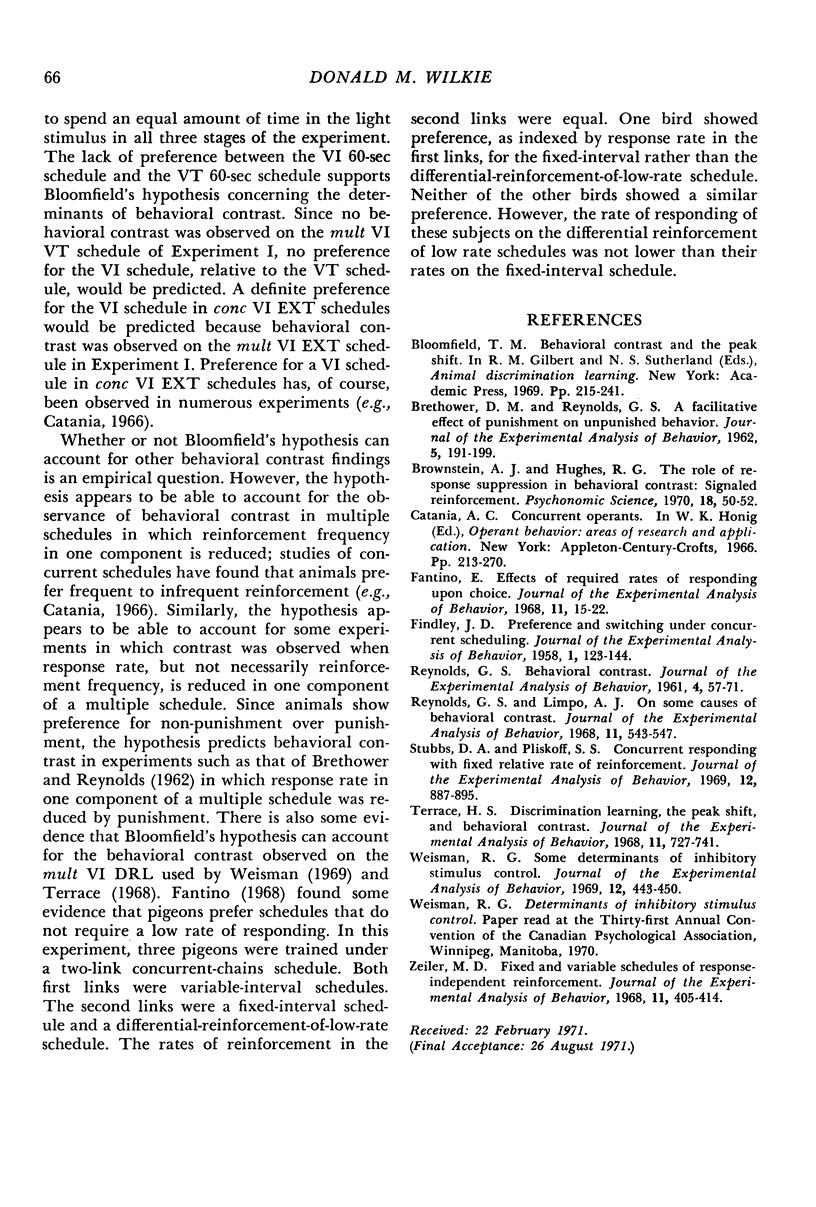
Selected References
These references are in PubMed. This may not be the complete list of references from this article.
- BRETHOWER D. M., REYNOLDS G. S. A facilitative effect of punishment on unpunished behavior. J Exp Anal Behav. 1962 Apr;5:191–199. doi: 10.1901/jeab.1962.5-191. [DOI] [PMC free article] [PubMed] [Google Scholar]
- Fantino E. Effects of required rates of responding upon choice. J Exp Anal Behav. 1968 Jan;11(1):15–22. doi: 10.1901/jeab.1968.11-15. [DOI] [PMC free article] [PubMed] [Google Scholar]
- Findley J. D. Preference and Switching under Concurrent Scheduling. J Exp Anal Behav. 1958 Apr;1(2):123–144. doi: 10.1901/jeab.1958.1-123. [DOI] [PMC free article] [PubMed] [Google Scholar]
- REYNOLDS G. S. Behavioral contrast. J Exp Anal Behav. 1961 Jan;4:57–71. doi: 10.1901/jeab.1961.4-57. [DOI] [PMC free article] [PubMed] [Google Scholar]
- Reynolds G. S., Limpo A. J. On some causes of behavioral contrast. J Exp Anal Behav. 1968 Sep;11(5):543–547. doi: 10.1901/jeab.1968.11-543. [DOI] [PMC free article] [PubMed] [Google Scholar]
- Stubbs D. A., Pliskoff S. S. Concurrent responding with fixed relative rate of reinforcement. J Exp Anal Behav. 1969 Nov;12(6):887–895. doi: 10.1901/jeab.1969.12-887. [DOI] [PMC free article] [PubMed] [Google Scholar]
- Terrace H. S. Discrimination learning, the peak shift, and behavioral contrast. J Exp Anal Behav. 1968 Nov;11(6):727–741. doi: 10.1901/jeab.1968.11-727. [DOI] [PMC free article] [PubMed] [Google Scholar]
- Weisman R. G. Some determinants of inhibitory stimulus control. J Exp Anal Behav. 1969 May;12(3):443–450. doi: 10.1901/jeab.1969.12-443. [DOI] [PMC free article] [PubMed] [Google Scholar]
- Zeiler M. D. Fixed and variable schedules of response-independent reinforcement. J Exp Anal Behav. 1968 Jul;11(4):405–414. doi: 10.1901/jeab.1968.11-405. [DOI] [PMC free article] [PubMed] [Google Scholar]


